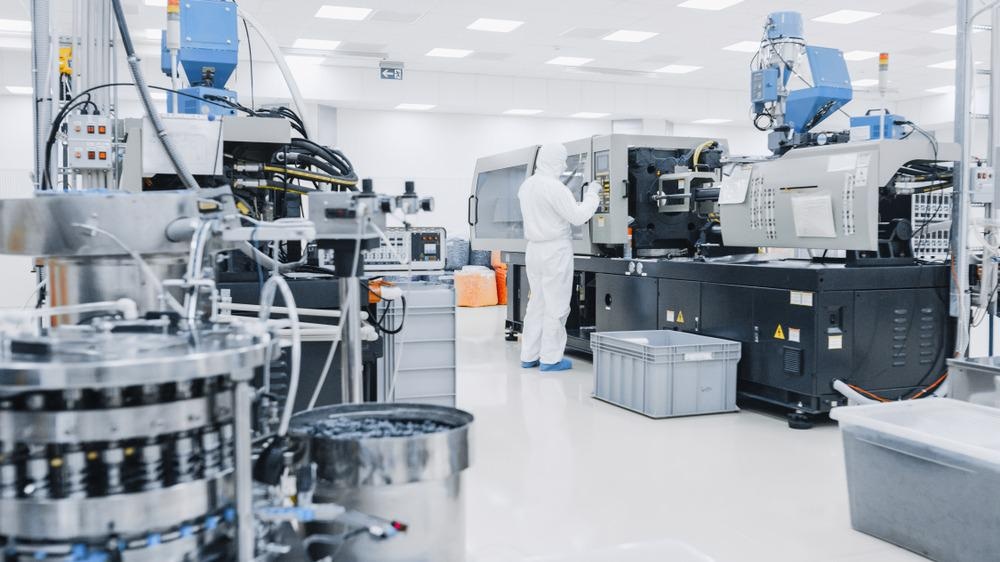 By Surbhi JainReviewed by Susha Cheriyedath, M.Sc.May 13 2022
By Surbhi JainReviewed by Susha Cheriyedath, M.Sc.May 13 2022In an article recently published in the journal Bioprinting, researchers discussed the droplet-based bioprinting of ionically crosslinking hydrogel bioinks with a mist-based printhead.

Study: Development of a mist-based printhead for droplet-based bioprinting of ionically crosslinking hydrogel bioinks. Image Credit: Gorodenkoff/Shutterstock.com
Background
Three-dimensional (3D) bioprinting is a popular method for producing living tissue constructions in vitro for a variety of tissue engineering applications. Droplet-based bioprinting (DBB) has the highest resolution printing of the bioprinting modalities. However, because the printing processes are only compatible with low viscosity bioinks, DBB's use is limited. Exposure to ionic crosslinkers and thermal modulation are two methods for crosslinking bioink droplets that have been investigated.
Crosslinker build-up on the print stage makes precise positioning of droplets and constructions difficult, which has a negative impact on the shape fidelity of the printed constructs. To overcome this problem, a new discovery involves simultaneously jetting bioink and crosslinker droplets, with the surplus crosslinker gathered through absorptive tissue beneath the print stage. Due to excessive gelation and droplet spreading, these liquid-based crosslinking techniques have poor resolution and layer adhesion. To ensure adequate form fidelity and layer adherence, a better mechanism is needed to control the crosslinking rate.
About the Study
In this study, the authors discussed the development of a novel droplet-based printer for the 3D bioprinting of ionically crosslinked hydrogel bioinks. The new technique provided the crosslinker in the mist form within the printhead. The development of a device to eliminate excess mist within the printhead minimized scaffold instability due to liquid collection during the printing stage. The printhead design was commercially compatible and provided co-droplet adhesion and good droplet gelation.
The team investigated the swelling properties and printability of crosslinked printed constructions which employed various mist delivery rates. Furthermore, the effects of printing factors such as mist outlet pressure, printhead height, and printhead channel diameters on mist distribution and the rate of gelation within the printhead were studied. The effects of droplet velocity and mist concentration on the kinetics of droplet impact on the surface were also studied using high-speed imaging.
The researchers developed a unique bioprinting technique to crosslink bioink droplets in a controlled manner before deposition onto the print stage. The performance of the mist-based DBB system was evaluated utilizing a hydrogel bioink that closely resembled a natural extracellular matrix (ECM).
Observations
Swelling ratios of scaffolds crosslinked with 1250, 1000, and 1500 mL/min mist inlet flow rates were 1101%, 1003%, and 1100%, respectively. On day 3, the average viability values for control and concentrations 3 wt%, 2 wt%, and 1 wt% were 99%, 98%, and 97%, respectively. On day 4, viability levels were lower than on day 3, and the 1 wt% sodium alginate bioink had the maximum viability.
The compressive modulus of the lowest flow rate of 1000 mL/min was 17.80 kPa, while the greatest flow rate of 1500 mL/min was 25.90 kPa. Scaffolds crosslinked with 1250, 750, and 1500 ml/min mist had printability values of 0.83 ± 0.06, 0.63 ± 0.34, and 0.34 ± 0.42, respectively. When a 40 wt% CaCl2 mist solution was used instead of a 10 wt% mist solution, the spreading factor was reduced by 12%.
It was demonstrated that the gelation rate could be adjusted by a change in the mist supply rate. The mist delivery rate influenced the shape fidelity and mechanical qualities of printed constructions. The printed constructs produced with the designed printhead had high cell survival and low cytotoxicity. Droplet-based bioprinting could be used to create biocompatible and sophisticated scaffolds for organ and tissue regeneration.
The prepared system exposed bioink droplets to a regulated crosslinker mist flow within a printhead, then collected the mist within the printhead to inhibit crosslinker accumulation on the print stage, which resulted in controlled gelation and, as a result, good layer adhesion and shape fidelity. The mist flowrate had an effect on the mechanical characteristics and shape fidelity of the printed constructions.
Furthermore, the gelation process could be adjusted by changing printing parameters, including mist removal pressure, printhead height, and printhead channel diameters. The droplet impact dynamics could be adjusted by varying the droplet impact velocity and mist concentration. The printed constructs were proven to exhibit great cell viability and low cytotoxicity.
Conclusions
In conclusion, this study elucidated that during printing, the DBB system used a mist-based printhead attachment to crosslink hydrogel droplets. Scaffolds were printed with good gelation and adhesion between droplets and layers using sodium alginate crosslinked with CaCl2 mist. The mist concentration was strongly dependent on printing parameters such as the outlet pressure and the height from the print stage to the printhead.
The authors emphasized that this method could be used to print a variety of printing materials or applications that require varying gelation speeds. They also mentioned that the printed structures are biocompatible, implying that printed scaffolds could be used to produce organs and tissue.
More from AZoM: Identifying Sulfur Poisoning with Near-Field Infrared Spectroscopy
Disclaimer: The views expressed here are those of the author expressed in their private capacity and do not necessarily represent the views of AZoM.com Limited T/A AZoNetwork the owner and operator of this website. This disclaimer forms part of the Terms and conditions of use of this website.
Source:
Badr, S., MacCallum, B., Madadian, E., et al. Development of a mist-based printhead for droplet-based bioprinting of ionically crosslinking hydrogel bioinks. Bioprinting e00207 (2022). https://www.sciencedirect.com/science/article/pii/S2405886622000173